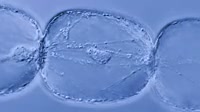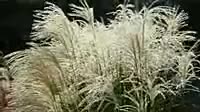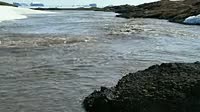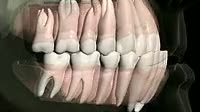Animation showing the pathology of a heart attack. The heart muscle is supplied with oxygen by the coronary arteries (dark) on the surface of the heart. The zoom in to one of these arteries shows the development of a plaque of atheroma within the artery wall. Atheroma is a fatty substance composed of cholesterol, fats and dead white blood cells. Plaques in artery walls lead to a condition known as atherosclerosis. This disorder is strongly associated with a poor diet and a sedentary lifestyle, with high blood levels of low-density lipoprotein (LD, the so-called 'bad cholesterol') being particularly dangerous. Atheroma plaques in coronary arteries can impair the blood flow either by blocking the blood vessel, or as here, by a piece of the plaque breaking off, forming an embolus. This can travel in the blood to a narrower artery, which it blocks. The heart muscle requires a constant supply of oxygen, and a blockage can rapidly lead to the death (black) of muscle tissue. This can lead to fibrilliation (rapid, irregular heartbeat) and ultimately to the heart stopping (cardiac arrest). Heart disease is the biggest cause of death in the developed world.
Details
WebID:
C00725344
Clip Type:
RM
Super High Res Size:
1920X1080
Duration:
00:00:30.000
Format:
QuickTime
Bit Rate:
25 fps
Available:
download
Comp:
200X112 (0.00 M)
Model Release:
NO
Property Release
No













 Loading
Loading